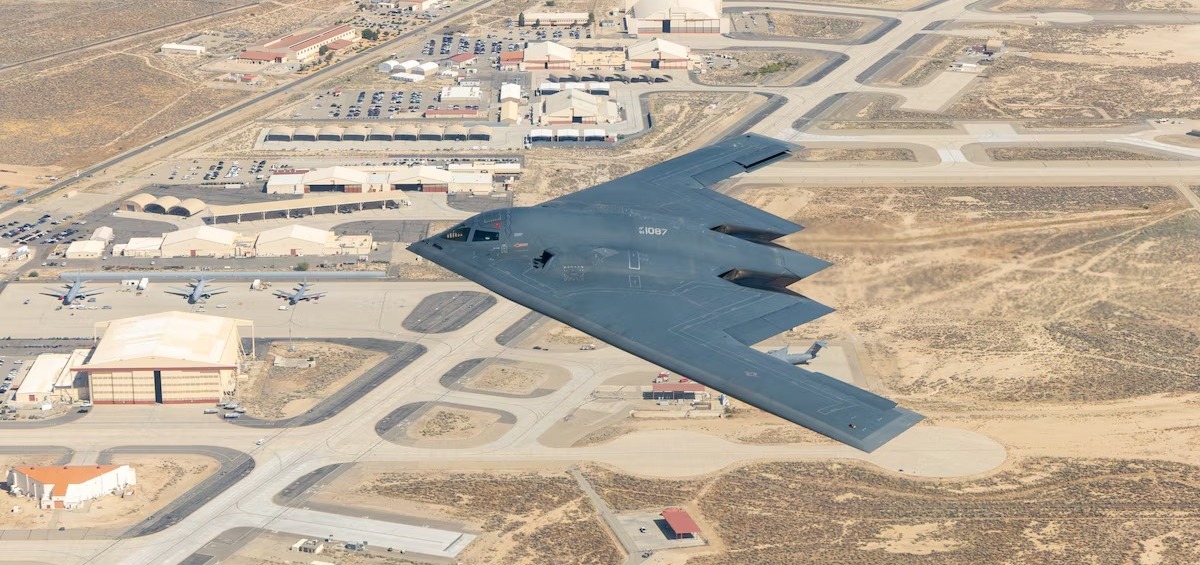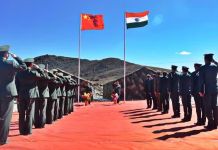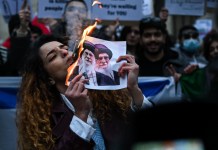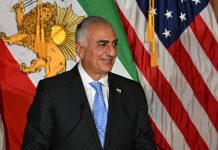The US Air Force announced the return of the B-2 Spirit bomber to Edwards Air Force Base on July 17, commemorating 35 years since its inaugural flight from Air Force Plant 42 in Palmdale, California, to Edwards.
Named The Spirit of Pennsylvania, the aircraft returned to the Aerospace Testing Universe, a hub for cutting-edge technological advancements.
The US Air Force explained that bringing the B-2 back to a test environment was not just a nostalgic move but a strategic first step towards new experiments and technological upgrades.
The testing will be conducted by a Combined Test Force comprising the 419th Flight Test Squadron, Air Force Operational Test and Evaluation Center (AFOTEC), and Northrop Grumman.
These initiatives ensure that the B-2 remains a vital component of the US Air Force’s fleet. Among the focal points for the new testing campaign is the integration of the open mission systems architecture known as Spirit Realm 1.
NEWS: The #USAF B-2 returns to test on 35th birthday. This will allow new experiments and technological upgrades to ensure the @AFGlobalStrike fleet remains ready in an era of #GlobalPowerCompetition.
More- https://t.co/r2iwBGzPyK@AFTestCenter @HQ_AFMC @AFLCMCofficial pic.twitter.com/Vp1fiFaU9q
— Edwards Air Force Base (@EdwardsAFB) August 26, 2024
Maj. Stephen Henderson, Assistant Director of Operations with the 419th Flight Test Squadron, piloted the B-2 back to Edwards on its anniversary.
He highlighted the significance of this return, noting that for the first time, the team will employ agile software development with Spirit Realm, a major shift for the squadron. Testing and development efforts are expected to intensify this fall.
Spirit Realm 1 is designed to provide mission-critical upgrades to the B-2’s communications and weapons systems through an open mission systems architecture. This approach not only enhances combat capabilities but also enables the fleet to adopt a new phase of agile software releases.
The new capabilities being fielded through the B-2 Spirit Realm software factory ecosystem align with the Air Force’s initiative to quickly adapt new capabilities into the aircraft, thus strengthening its mission execution capabilities.
Alongside improvements to communications and weapons systems, the upgrades also include new cockpit displays for the B-2. US Air Force officials said that these enhancements were crucial as the US continues to face global power competition, requiring a robust and advanced defense stance.
Maj. Henderson also pointed out the significance of high-level Air Force leadership’s decision to allocate one of the limited B-2 jets for testing.
This underscored the importance of the new capabilities being tested and the urgency to deploy them to frontline operations as swiftly as possible. These enhancements are expected to keep the B-2 stealth bomber operational until the late 2020s or early 2030s, at which point it will be replaced by the next-generation B-21 Raider.
Last year, the B-2 Spirit became the first US aircraft approved to carry the B61-12, the latest model in the nuclear bomb series.
The B61 series has been a key component of the US nuclear arsenal since its introduction in the 1960s, with variants like the B61-3, -4, and -7 still in service. However, there are plans to gradually phase these out.

B-2 Bomber’s Record-Breaking Mission Against Taliban
On July 17, the aerospace community celebrated the 35th anniversary of the first flight of the B-2 Spirit stealth bomber, which took place on July 17, 1989.
The B-2 Spirit represents a landmark achievement in American aerospace engineering. With its distinctive 172-foot wingspan, 20 feet wider than that of a Boeing 767 airliner, the B-2 combines size with an exceptionally small radar signature, similar to that of an insect.
This capability, the result of sophisticated design and manufacturing processes, allows the B-2 to evade enemy radar and penetrate hostile airspace undetected.
The aircraft’s blend of stealth, payload capacity, and precision targeting significantly enhances its cost-effectiveness compared to other power projection platforms, both past and present.
One of the most notable demonstrations of the B-2’s strategic value occurred during Operation Enduring Freedom (Operation Enduring Freedom was the official name used by the US government for both the first stage of the War in Afghanistan and the larger-scale Global War on Terrorism).
On the opening night of the campaign, the B-2 undertook a record-breaking 44-hour mission from Whiteman Air Force Base in Missouri to Afghanistan, marking the longest air combat sortie in history.
Major Melvin G. Deaile and Captain Brian Neal flew the historic mission in the B-2 Spirit of America, a notable aircraft that played a significant role in the mission’s success. The duo navigated the Pacific route, alternating between resting and ensuring that both were at the controls during crucial moments.
The mission necessitated several aerial refuelings from KC-10 and KC-135 tankers during its course. By the time they reached Afghan airspace, they had already been airborne for 30 hours. To combat fatigue, they used stimulants provided by flight surgeons.
Unexpectedly, target priorities shifted during the mission, requiring nearly three-quarters of their aim points to be updated mid-flight.
This adaptability was made possible with the use of Combat Track II, a then-novel system for reprogramming JDAMs (Joint Direct Attack Munition), which, despite being cumbersome by today’s standards, was cutting-edge technology at the time.
After releasing 12 of their 16 JDAMs over Afghanistan during multiple passes to enhance targeting precision, Deaile and Neal prepared to land at Diego Garcia. However, they were redirected to make another run over enemy territory to fire their remaining bombs.
Following this, they finally landed at Diego Garcia. Owing to the constraints of space and resources at the base, the Spirit of America remained operational with its engines running during a swift crew change.
The aircraft then immediately began its return journey to Whiteman Air Force Base, completing a mission duration of over 70 hours without shutting down its engines.
- Contact the author at ashishmichel(at)gmail.com
- Follow EurAsian Times on Google News




